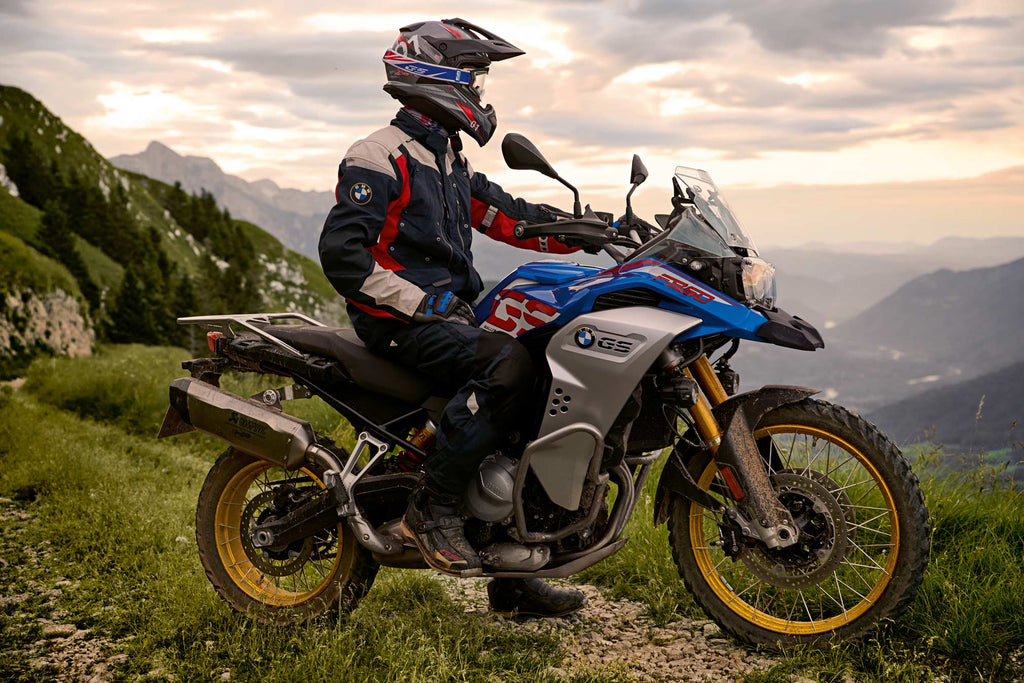BMW GS: Top 5 Issues & Problems (And What to Do)

This probably comes as no surprise to you, but BMW made a great motorcycle with the GS family of motorcycles.
While that includes all of the GS lineups, generally speaking, when people talk about the GS, it’s usually in reference to the big-displacement versions: the R 1100 GS, R 1150 GS, R 1200 GS, and now the R 1250 GS.
History has shown us that these motorcycles are very reliable, and when you do need to work on them, those exposed cylinder heads make routine maintenance pretty simple.
However, the perfect, maintenance-free, and problem-free, motorcycle doesn’t exist, and like all bikes out there, the BMW GS is subject to problems. Some of these you might call quirks, while others might consider flat-out safety issues.
Here, we’re going to talk about the top five issues and problems GS owners have faced and what you can do about it. Keep in mind that all of these issues are relatively rare.
But when you mass-produce motorcycles in the numbers BMW does with the GS, there are bound to be a few bad apples eventually.
1. Fork Recall
We start this list with the biggest issue to be concerned about. On some of the water-cooled R 1200 GS and R 1200 GS Adventure models, a shocking amount of owners have experienced the fork tube splitting from the fork cap–we don’t need to explain why a separated fork tube can be dangerous, do we?
The exact reason for the separation is a little unclear. The most obvious answer would be from repeated stress, like the kind of stress a motorcycle like the R 1200 GS would experience especially off-road.
Nonetheless, this is a severe problem and BMW has acted by issuing a global recall on R 1200 GS and R 1200 GS Adventure models built between November 2013 - June 2017.
Under the recall, BMW will inspect the bike and measure the amount of separation between the top cap and the fork. If it’s more than the recommended tolerance, BMW will repair or replace the parts for free.
However, if the gap is within tolerance, the bike will be deemed safe to ride and no retrofitting of parts will happen.

2. Losing Power
Some owners have reported a situation where the check engine light will light up and the bike will lose power.
In most circles, this is when the vehicle goes into “limp mode.” This happens on certain GS models due to camshaft position sensors that go haywire and think the camshaft angle offset to the crankshaft is wrong.
It’s not. In fact, mechanically, the engine is fine. Faulty sensors and/or software is all that’s at play here, and BMW issued a technical bulletin–SB-10056719-9278–to correct the faulty software and restore full engine power.
3. Sidestand Recall
There are few things as embarrassing as motorcyclists than thinking your sidestand is down when it’s really not and watching your bike fall to the ground. However, in the case of the littlest member of the GS family, the G 310 GS, if this happens to you it may actually be the bike’s fault.
BMW issued a recall for the 310 GS (and 310 R, which shares the same frame) sidestands because the stands, or even the frames themselves (presumably the mounting tab where the stand mounts to the frame), could be faulty and cause the bike to fall over.
If you own a 310 built within BMW’s specified timeframe, you’ll be notified and BMW your stand or frame will be replaced for free.
4. Kill Switch
This one isn’t nearly as common, but it happens enough to make it worthy of this list. Some GS owners report faulty kill switches, or engine cutoff switches, as BMW dealers call them. Unlike many other manufacturers who use large, robust red switches, the kill switch on the GS is a little red tab you thumb over.
It’s prone to breaking if you get aggressive with it, and the switch itself is rather small and some early models would have bad contacts and/or were prone to early corrosion.
As mentioned before, the issue isn’t common enough to warrant any sort of recall, so if you find yourself with a bad kill switch, you can do a few things. First, you can simply turn off the bike with the key.
Second, you can try shutting off the bike with the sidestand first. And third, you can buy a new switch and be on your way.

5. Water Pump Leaks
While not necessarily a “problem” per se, some owners of the liquid-cooled GS report weeping from the water pump. Unlike the GS, owners of other liquid-cooled BMW models have noted more serious water pumps issues.
Without proper, or any, cooling, this will obviously cause catastrophic damage to your engine. Some slight weeping seems to be normal and isn’t cause for concern, but it’s worth keeping an eye on and replacing if/when it goes beyond a weep and moves to droplets on the ground.
If that happens, try and get it replaced under warranty. If you can’t for whatever reason, revised water pump designs have been reported to solve the issue for thousands upon thousands of trouble-free miles.
Concluding Thoughts
Other than your forks separating, the other issues on this list are pretty minor things and are also rare.
By and large, most people will agree that the GS is a strong, robust, and reliable motorcycle, capable of carrying you for thousands and thousands of miles and campsites.
Is there anything we missed? If you’ve had a common problem with your GS let us know, and tell us what the fix was, too.

